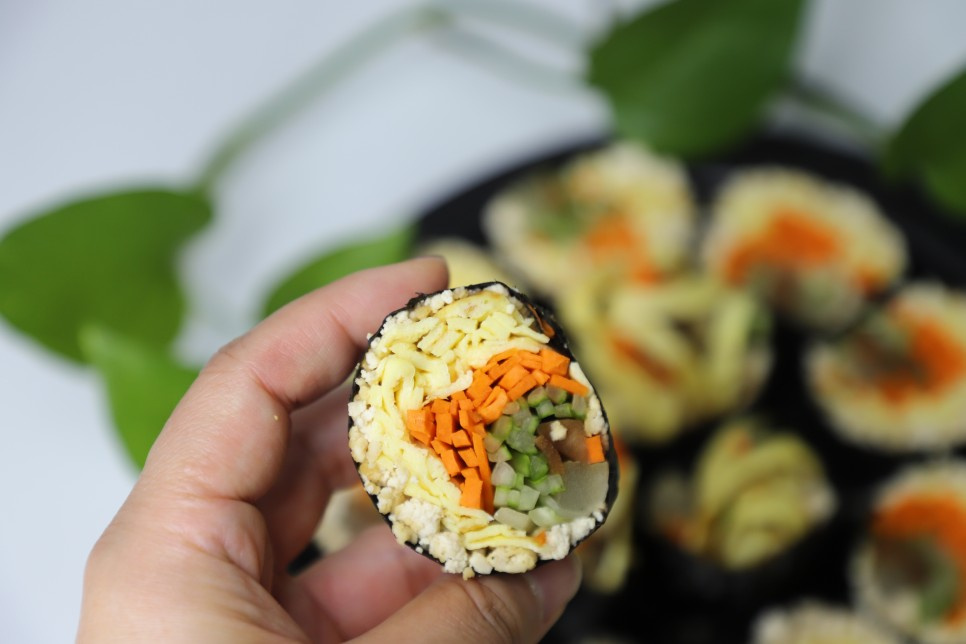
Make tofu kimbap. Instead of rice, let's put tofu and eat it lig
In my daily life of making lunch boxes
Let's go on a diet together.
Low in calories and light in taste
Let's make gimbap with tofu instead of rice
It's refreshing with lots of eggs and vegetables
It's savory with tofu
2 serving
Within 120 minutes
콩설기
- Ingredients
-
-
Tofu2piece
-
Kim5piece
-
Eggs8ea
-
Cucumber2ea
-
Carrot1.5ea
-
Burdock
-
Pickled radish
-
- Cooking Steps
-
STEP 1/24Rinse the tofu in water, put it on a sieve, and put a heavy thing on it and press it down for a while, and it will drain a bit.
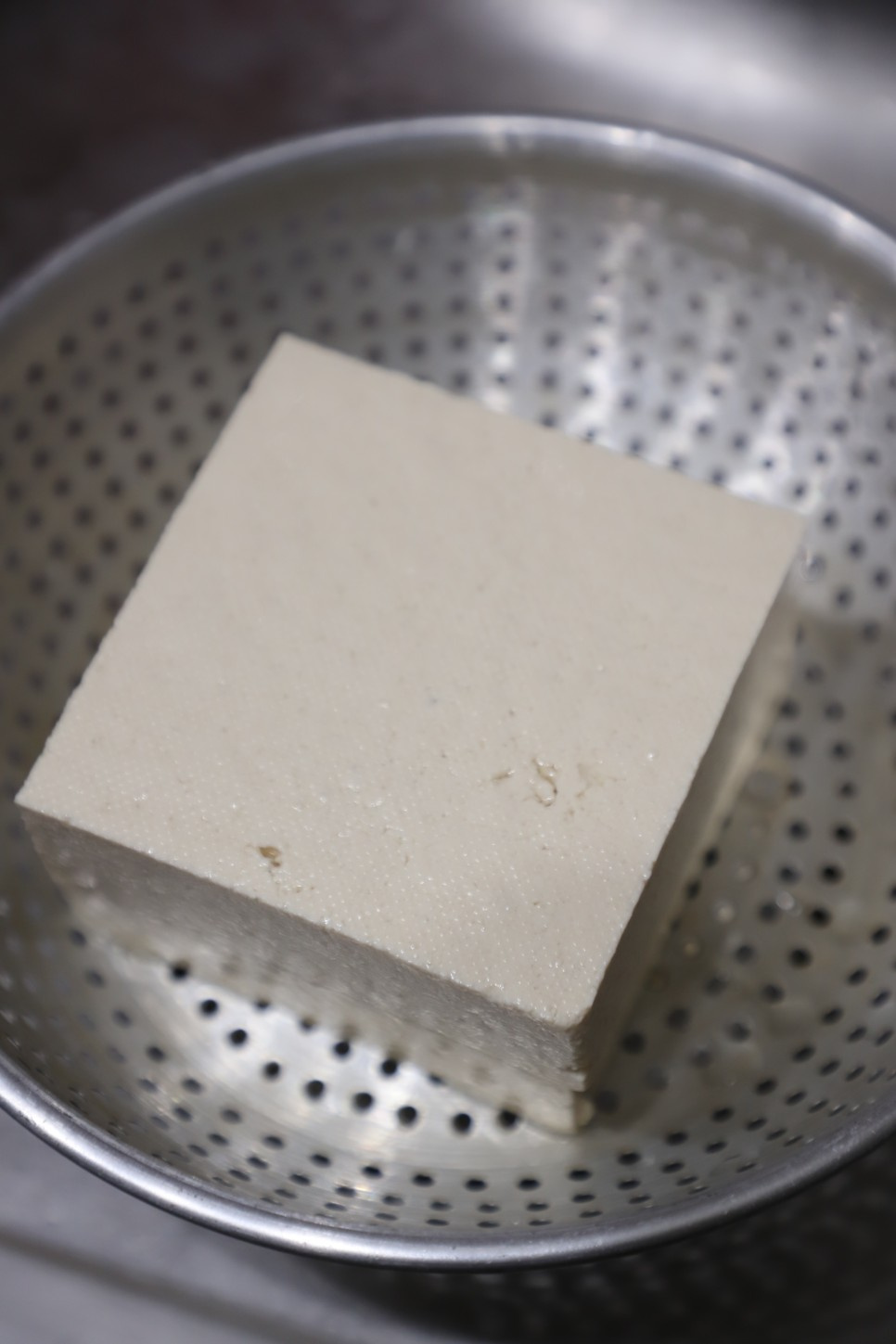 STEP 2/24Mash the tofu that's been drained with your hands
STEP 2/24Mash the tofu that's been drained with your hands STEP 3/24Squeeze the water tightly into the cotton cloth.
STEP 3/24Squeeze the water tightly into the cotton cloth.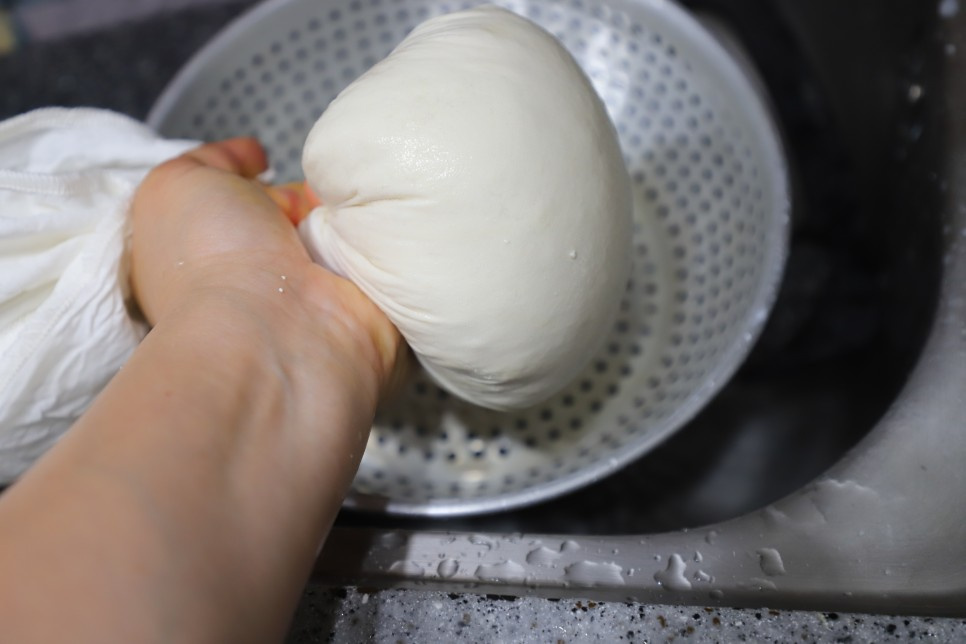 STEP 4/24Place tofu in a dry frying pan and stir-fry over medium-low heat, dripping water for about 20 minutes.
STEP 4/24Place tofu in a dry frying pan and stir-fry over medium-low heat, dripping water for about 20 minutes.
I stir-fried it very thoroughly It's good to dry it and stir-fry it until it's slightly viscous. If it's too dry, it's too scattered. STEP 5/24Put the fried tofu in a bowl and let it cool for a while.
STEP 5/24Put the fried tofu in a bowl and let it cool for a while. STEP 6/24Beat the eggs in advance and leave them for a while before using them, so you can eat them more smoothly as the egg protein melts.
STEP 6/24Beat the eggs in advance and leave them for a while before using them, so you can eat them more smoothly as the egg protein melts.
Beat in 8 eggs and let stand for about 30 minutes. During that time, you can prepare other vegetables.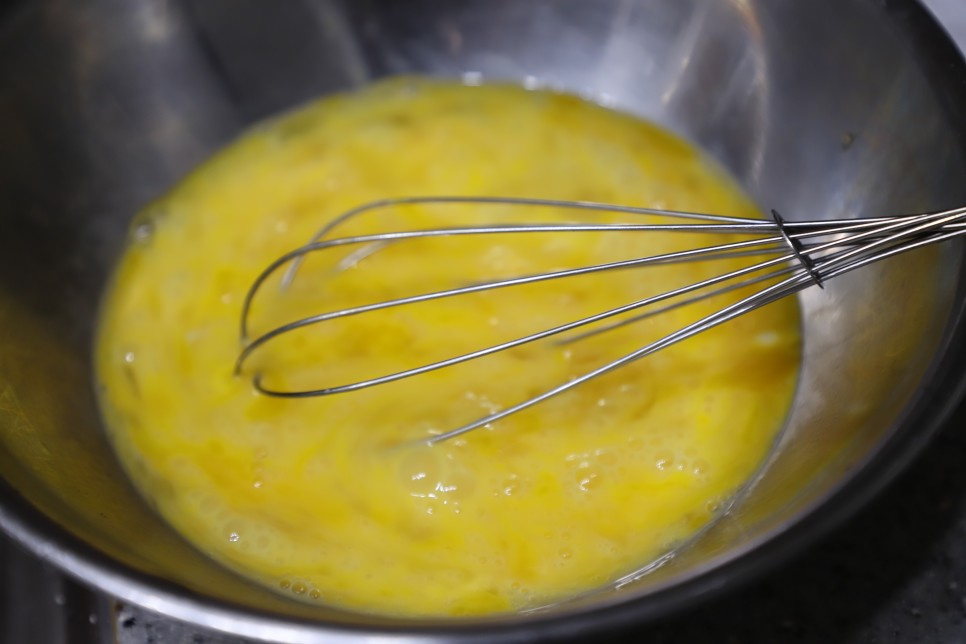 STEP 7/24Sieve the beaten eggs once. If you don't put it on the sieve, the texture is not good because of the stickiness. So, I always put it down on a sieve.
STEP 7/24Sieve the beaten eggs once. If you don't put it on the sieve, the texture is not good because of the stickiness. So, I always put it down on a sieve.
Then sprinkle with a little pepper and mix. You can season it lightly. I didn't season it separately. STEP 8/24The frying pan needs to be heated in advance to fry the egg well. Reduce the heated frying pan to low heat, apply only a little cooking oil to the surface, and turn the frying pan by pouring the egg mixture little by little. Then you can make thin egg garnish.
STEP 8/24The frying pan needs to be heated in advance to fry the egg well. Reduce the heated frying pan to low heat, apply only a little cooking oil to the surface, and turn the frying pan by pouring the egg mixture little by little. Then you can make thin egg garnish. STEP 9/24If you roll the eggs and slice them, you can easily slice them.
STEP 9/24If you roll the eggs and slice them, you can easily slice them.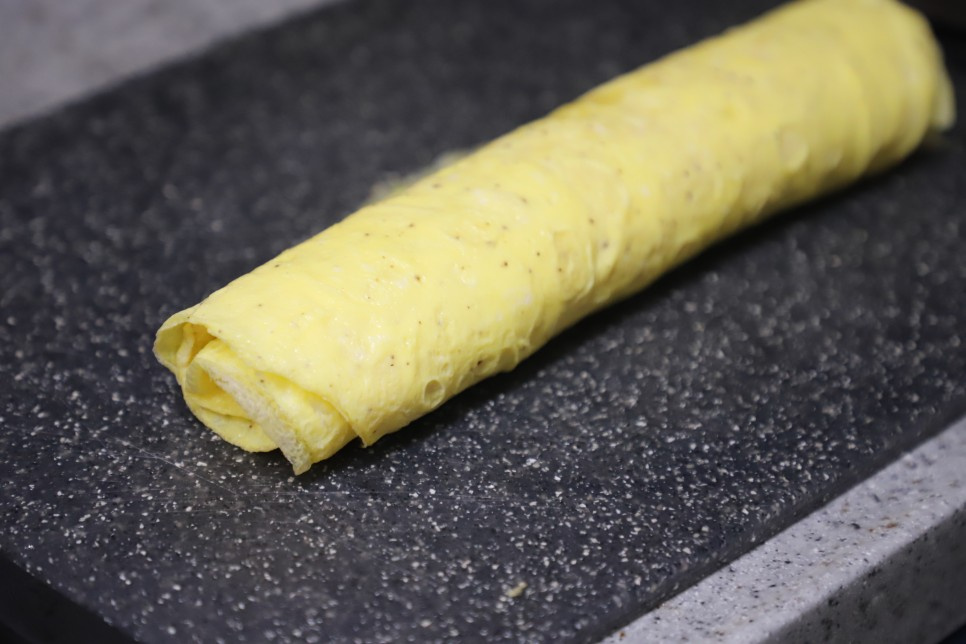 STEP 10/24Cut it into the thickness you want.
STEP 10/24Cut it into the thickness you want.
Beat in the chopped eggs by hand. STEP 11/24Put pickled radish and burdock on a kitchen towel to remove some moisture.
STEP 11/24Put pickled radish and burdock on a kitchen towel to remove some moisture.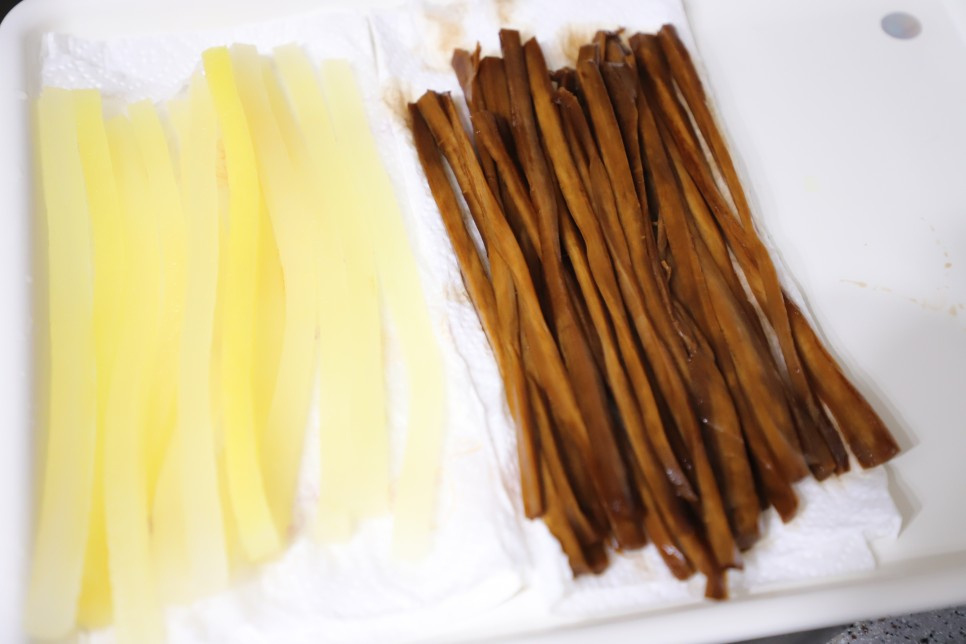 STEP 12/24You can chop the carrots and pickle them slightly with sugar and salt, or fry them with a little oil in a frying pan.
STEP 12/24You can chop the carrots and pickle them slightly with sugar and salt, or fry them with a little oil in a frying pan.
I didn't do anything, just shredded raw carrots and used them. STEP 13/24The green top part of cucumbers has a bitter taste, so it's better to cut them off a lot. Remove both ends and divide into 3 or 4 pieces. You can cut it into 3 pieces, but when you turn it around, it has to be small to make it easier to cut it, so I cut it into 4 pieces.
STEP 13/24The green top part of cucumbers has a bitter taste, so it's better to cut them off a lot. Remove both ends and divide into 3 or 4 pieces. You can cut it into 3 pieces, but when you turn it around, it has to be small to make it easier to cut it, so I cut it into 4 pieces.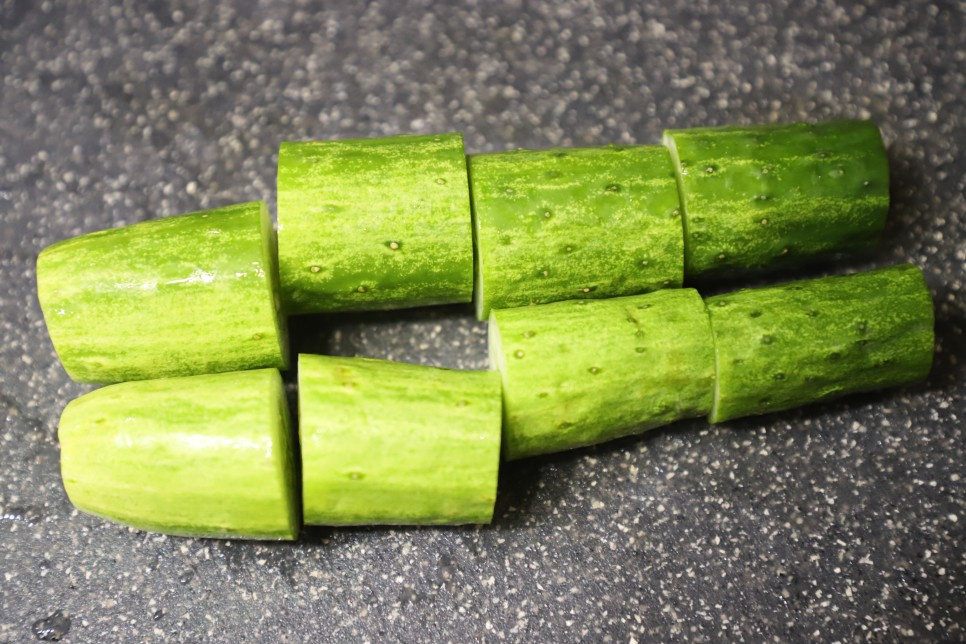 STEP 14/24You don't use the seeds after you cut the cucumber.
STEP 14/24You don't use the seeds after you cut the cucumber.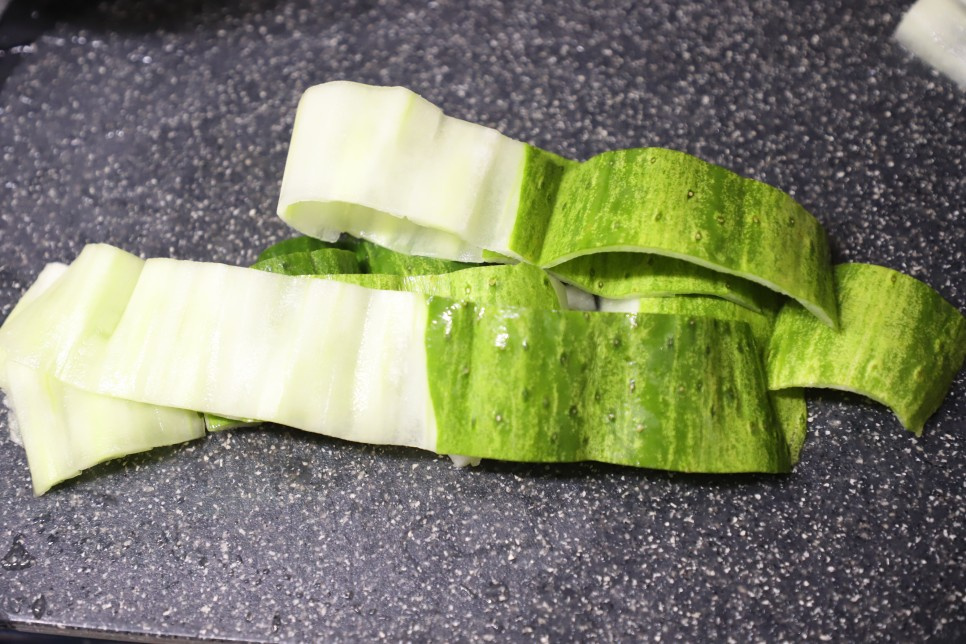 STEP 15/24When you cut cucumbers after turning them around, you can cut them a little easier without slipping if you cut them in the inside rather than the skin.
STEP 15/24When you cut cucumbers after turning them around, you can cut them a little easier without slipping if you cut them in the inside rather than the skin.
There is a way to shred cucumbers other than turning them around. See the post below for more information.
https://blog.naver.com/aspasia2/221511271881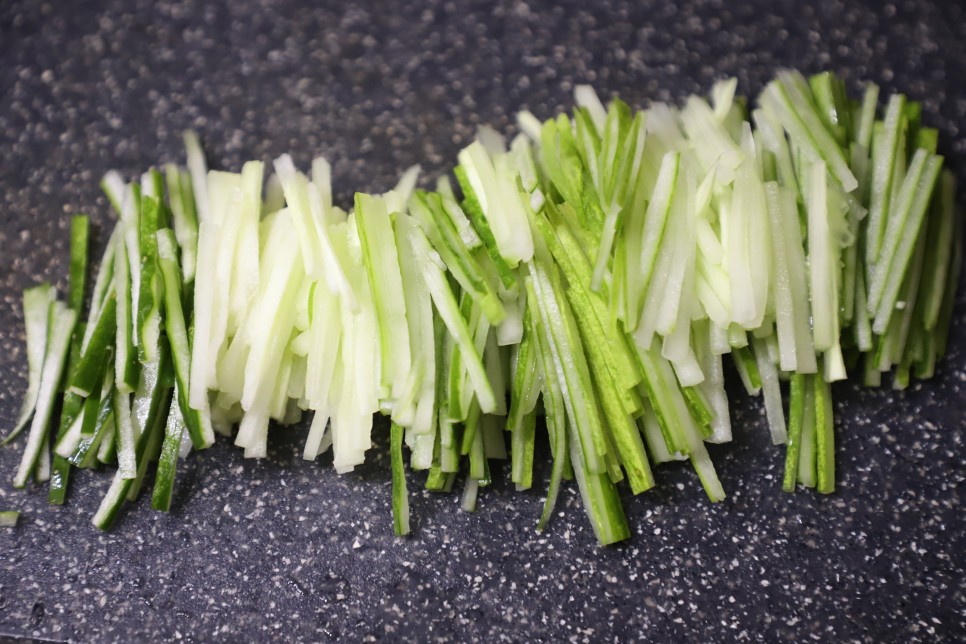 STEP 16/24Like this, the ingredients are ready Now, I'm going to make gimbap.
STEP 16/24Like this, the ingredients are ready Now, I'm going to make gimbap.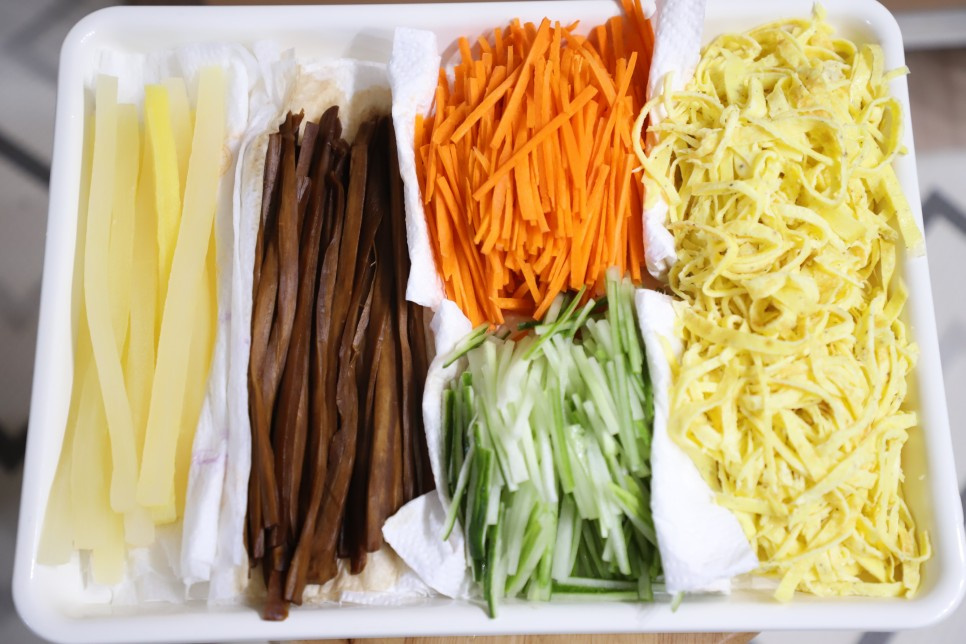 STEP 17/24Please put the ingredients on the rough part of the gimbap laver. If the rough part goes outside, it's not good because it feels rough when you eat it.
STEP 17/24Please put the ingredients on the rough part of the gimbap laver. If the rough part goes outside, it's not good because it feels rough when you eat it.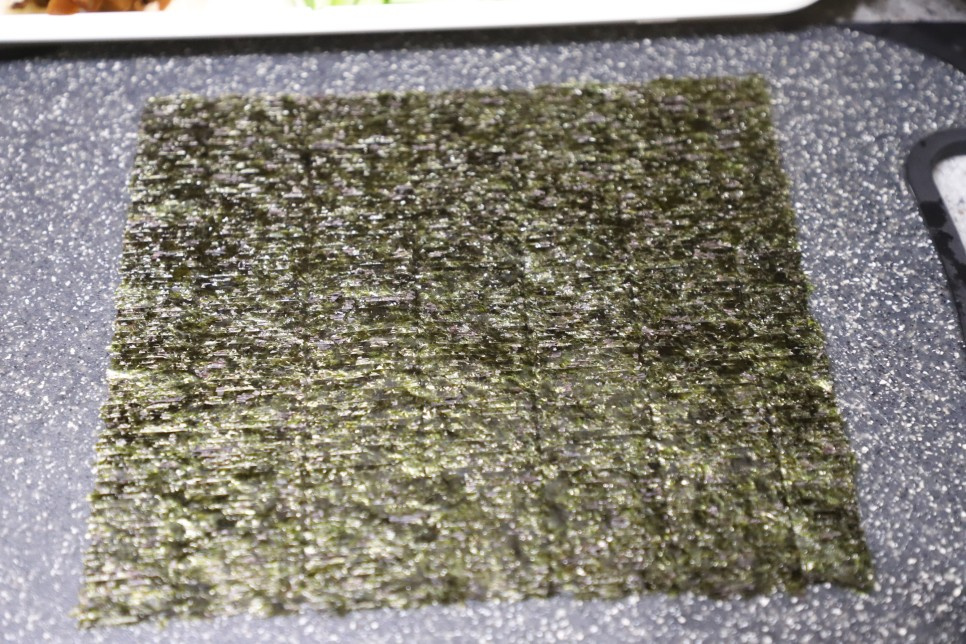 STEP 18/24Spread tofu as thin as 2/3 of seaweed.
STEP 18/24Spread tofu as thin as 2/3 of seaweed.
Place plenty of egg garnish on it.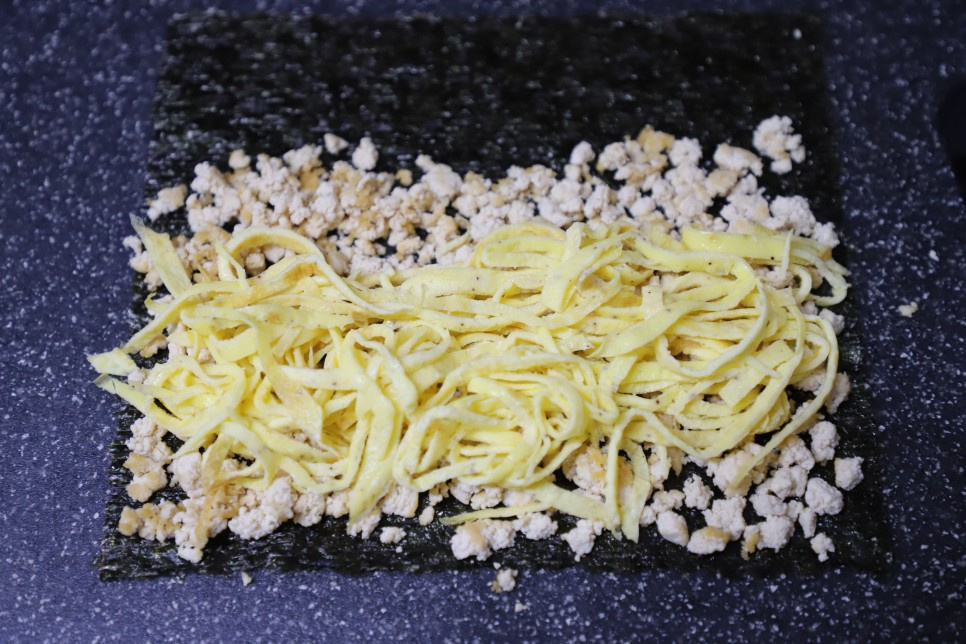 STEP 19/24Add chopped carrots and plenty of cucumbers.
STEP 19/24Add chopped carrots and plenty of cucumbers.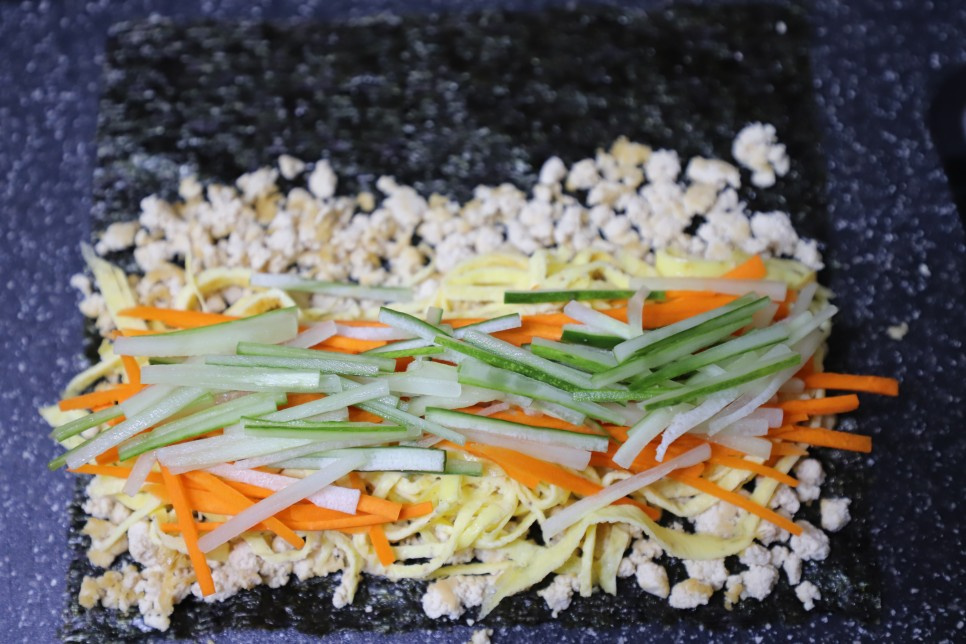 STEP 20/24The burdock is thin, so please put two rows and one row of pickled radish.
STEP 20/24The burdock is thin, so please put two rows and one row of pickled radish.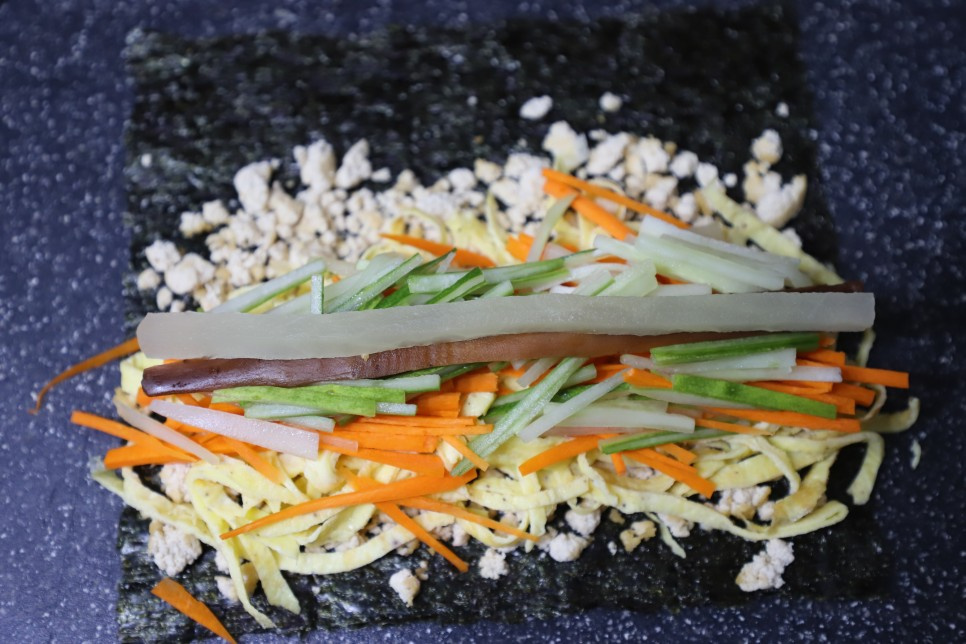 STEP 21/24Put water on the end of the seaweed. There's no sticky rice, so it doesn't fall off and sticks well.
STEP 21/24Put water on the end of the seaweed. There's no sticky rice, so it doesn't fall off and sticks well. STEP 22/24That's how I made 5 rolls of gimbap.
STEP 22/24That's how I made 5 rolls of gimbap.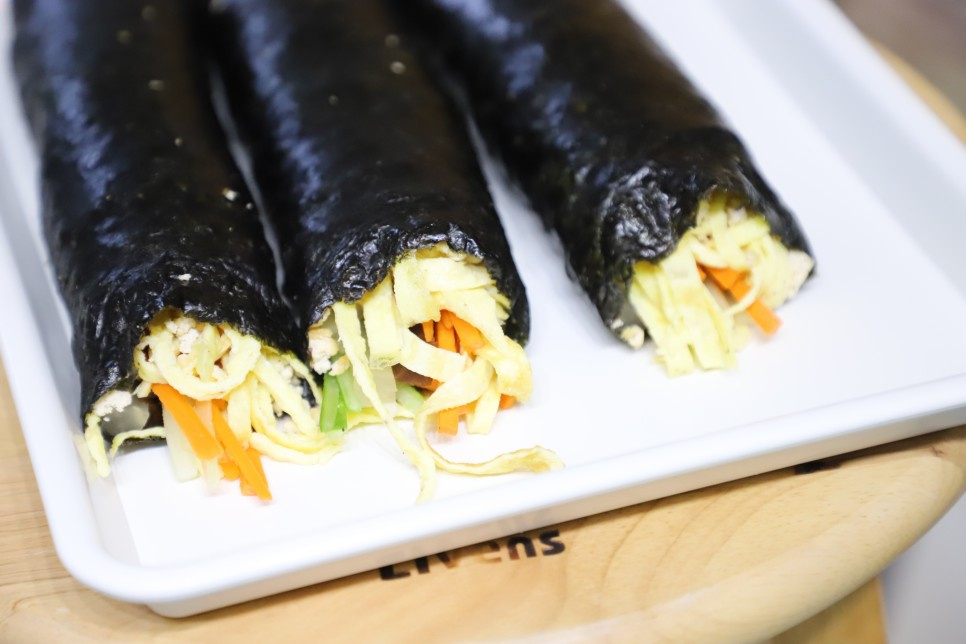 STEP 23/24Put a little bit of sesame oil on the top of the seaweed.
STEP 23/24Put a little bit of sesame oil on the top of the seaweed.
It's better to use a knife well. If the knife doesn't cut well, the seaweed won't cut well, so it can burst. I cut it thicker than regular kimbap.
I'm afraid the tofu will pop out. Gimbap tastes better when it's cheap. The taste of eating the kkongji part. Ggongji is always mine. It's delicious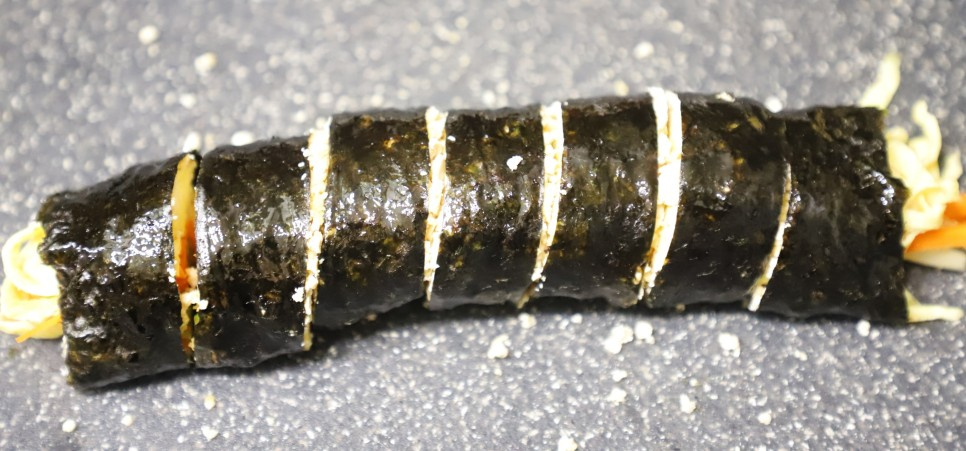 STEP 24/24It's a new feeling. I can't believe I can eat gimbap so deliciously without rice. I like tofu a lot, but I think the savory taste of tofu doubles when I make it like this. It goes well with vegetables. I don't feel any pressure while eating.
STEP 24/24It's a new feeling. I can't believe I can eat gimbap so deliciously without rice. I like tofu a lot, but I think the savory taste of tofu doubles when I make it like this. It goes well with vegetables. I don't feel any pressure while eating.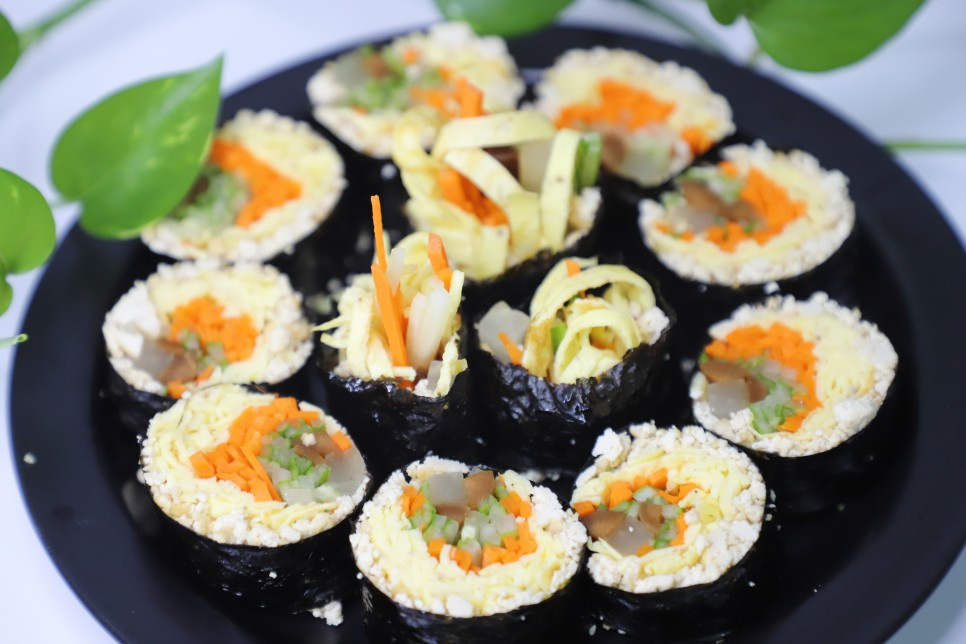
- Kimchi Recommended recipe
-
-
1
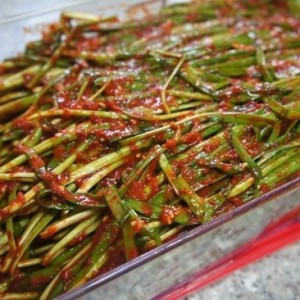 Kimchi with chives4.97(98)
Kimchi with chives4.97(98) -
2
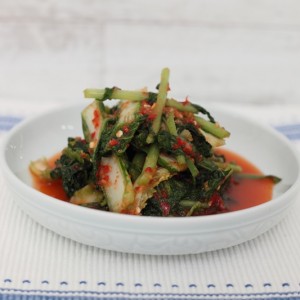 Making young radish kimchi4.92(36)
Making young radish kimchi4.92(36) -
3
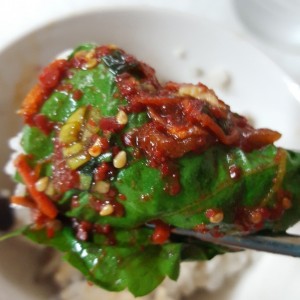 Golden recipe for perilla leaf kimchi with no regrets ^^4.84(101)
Golden recipe for perilla leaf kimchi with no regrets ^^4.84(101) -
4
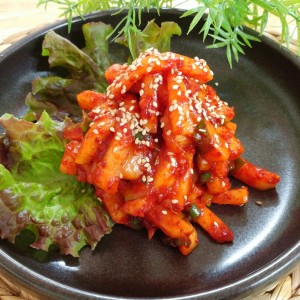 [Simple bossam kimchi] Anyone can do it!4.94(215)
[Simple bossam kimchi] Anyone can do it!4.94(215)
-
- chicken Recommended recipe
-
-
1
 Making Popcorn Chicken with Dip-Dip it in4.83(6)
Making Popcorn Chicken with Dip-Dip it in4.83(6) -
2
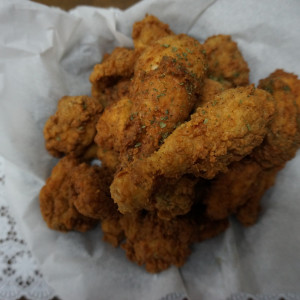 Crispy fried chicken5.00(5)
Crispy fried chicken5.00(5) -
3
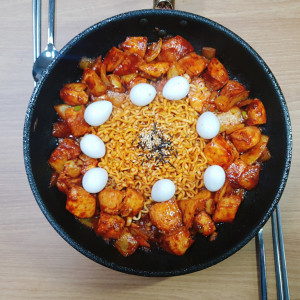 Pickled chicken. Charcoal chicken5.00(9)
Pickled chicken. Charcoal chicken5.00(9) -
4
 Making barbecue chicken Let's make a barbecue-flavored chicken5.00(14)
Making barbecue chicken Let's make a barbecue-flavored chicken5.00(14)
-